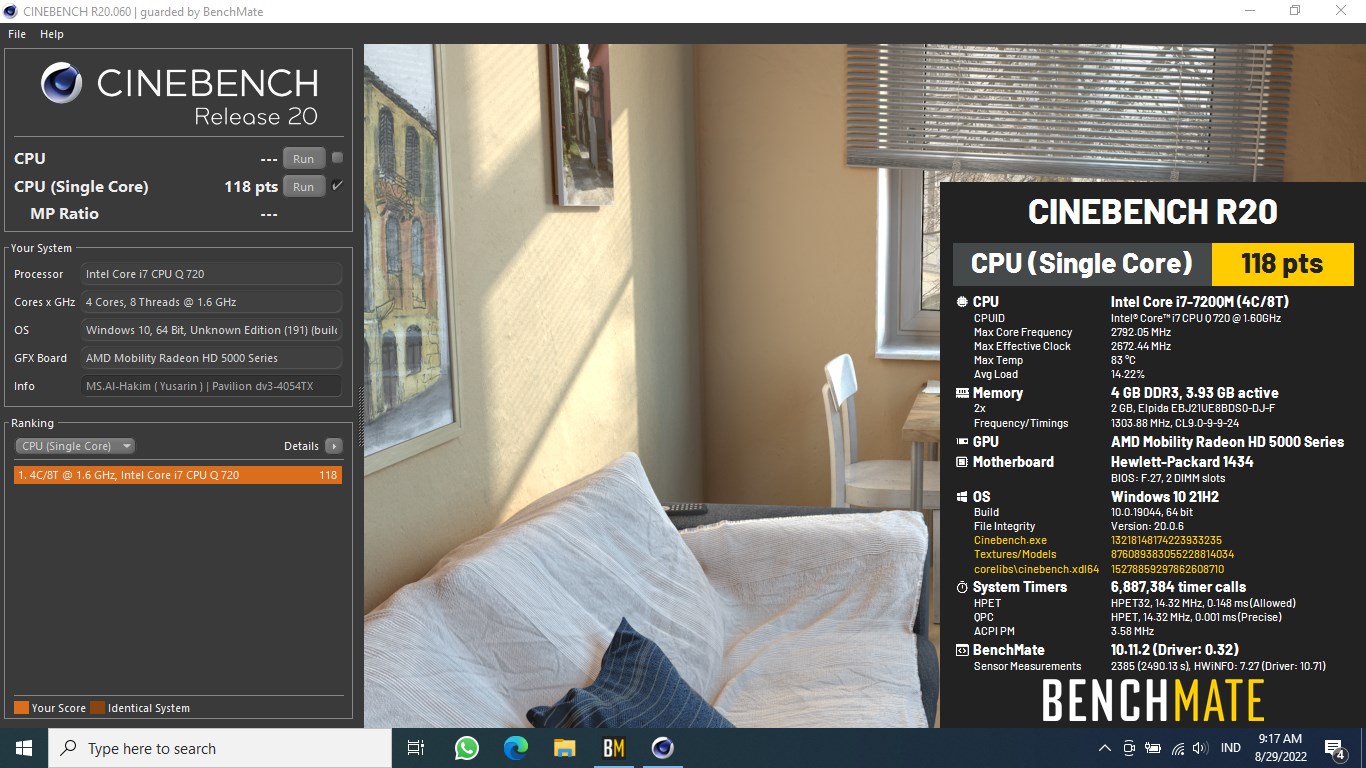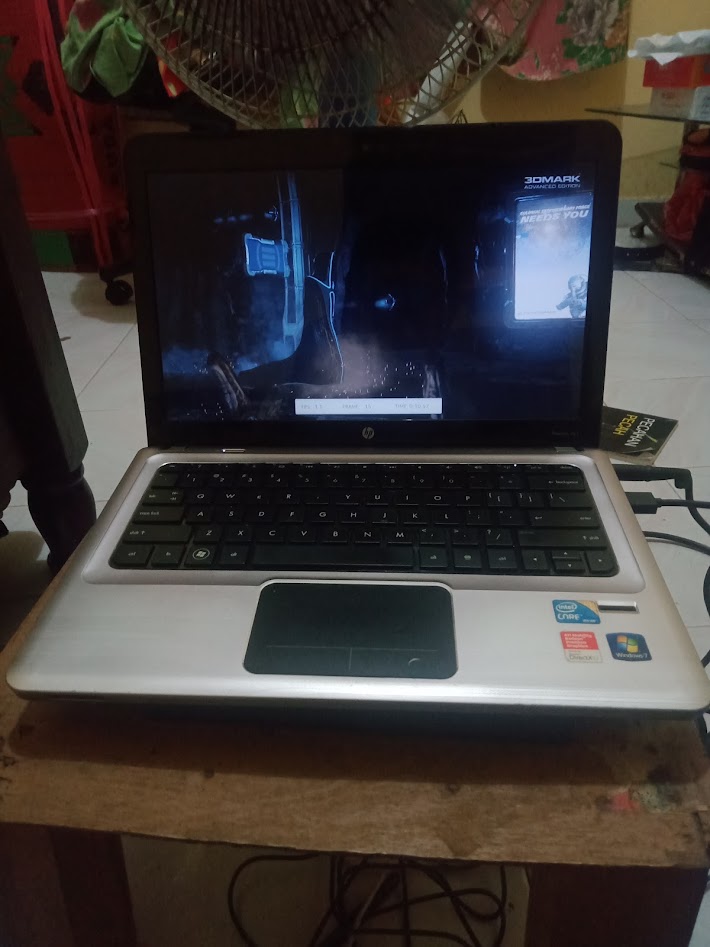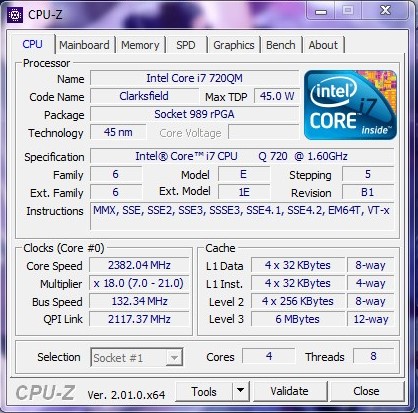Cinebench - R20 Single Core score 118 pts with a i7-720QM
Thursday, 01 January 1970 07:00 | Update at null
Media Gallery
Screenshot

Device, Setup, etc



URL
https://www.facebook.com/hakimnu.id/posts/3334965160069457Information Detail
Hardware: Intel Core i7 720QM
Specs:CPUID : Intel(R) Core(TM) i7 CPU Q 720 @ 1.60GHz
Architecture : x86
Codename : Clarksfield
L3 Cache : 6MB
Clock : 1.60GHz - 2.80GHz
Core/Thread : 4/8
TDP : 45W
Technology : 45nm
Socket : PGA988
IGPU : -
See more specification...
Software: Cinebench - R20 Single Core
Score: 118 pts
About: Cinebench - R20 Single CoreCinebench R20 Single Core is part of the Cinebench R20 benchmark suite that is specifically focused on measuring the performance of a single processor core (single-threaded performance). This benchmark is very important because many everyday applications, including lightweight software and most games, still rely on the performance of a single CPU core to handle important tasks such as application logic, user interface, and lightweight data processing quickly.
Unlike multi-core testing, which measures the collective strength of all processor cores, single-core testing reveals the efficiency and architecture of the CPU core itself. Using the complex rendering workload from Cinema 4D R20, Cinebench R20 Single Core presents a real-world workload that demands photorealistic rendering capabilities from a single CPU thread. This makes the benchmark score highly useful for comparing processor performance in light to medium usage scenarios.
Scores from Cinebench R20 Single Core are given in points (pts), where a higher score indicates better CPU performance in completing single-threaded tasks. This is particularly useful for users who want to know which processor excels in per-core efficiency, especially for tasks like software development, light editing, and gaming with engines that are still single-thread optimized.
Overall, Cinebench R20 Single Core remains an accurate and relevant tool for evaluating the real-world performance of modern processors, especially for users who want to choose the best CPU for needs that do not always require many cores but demand quick and efficient responses from each processor core.
The Intel Core i7-720QM, launched in Q3 2009, was one of the first mobile quad-core processors to feature Intel's Nehalem microarchitecture, specifically the Clarksfield variant. Targeted at high-performance laptops, such as gaming machines and mobile workstations, the i7-720QM brought 4 physical cores and 8 threads to the mobile platform, thanks to Hyper-Threading Technology providing a significant boost in multi-threaded workloads like video editing, 3D rendering, and other professional-grade applications. The processor runs at a base clock speed of 1.6 GHz, but it can dynamically increase up to 2.8 GHz using Intel Turbo Boost, depending on thermal headroom and power availability.
Manufactured using a 45nm process, the i7-720QM has a TDP of 45W, which is quite high by today's mobile CPU standards. This thermal demand necessitated more robust cooling solutions in laptops that featured the chip. Unlike modern CPUs, the i7-720QM does not come with integrated graphics, which means systems based on this processor require a dedicated GPU often from AMD or NVIDIA for graphics processing and display output. As such, it was typically paired with mid-to-high-end discrete graphics cards in its time, making it a solid choice for gaming and multimedia laptops in the late 2000s and early 2010s.
While the Core i7-720QM was a powerhouse during its release, its performance and efficiency are significantly outpaced by modern CPUs built on smaller nodes and with higher IPC (Instructions Per Clock). Nevertheless, legacy laptops using the i7-720QM can still be viable for basic computing tasks like web browsing, document editing, or watching videos especially if paired with an SSD upgrade and increased RAM. Users running Windows 10 on such systems may experience some limitations, but with proper optimization and lightweight software, the CPU can still deliver a usable experience in non-demanding environments.
Hardware Detail:
Device: HP Pavilion dv3-4054TX
RAM: 4GB DDR3 Single Channel
OS: Windows 7, Windows 10
* Not Avaiable
